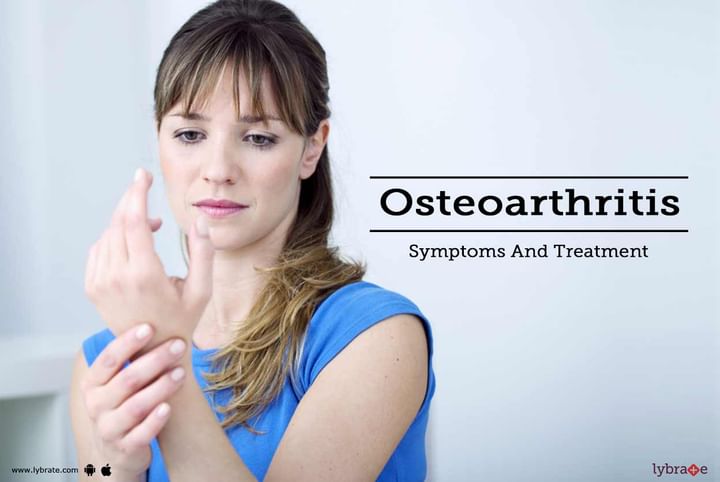Osteoarthritis: Symptoms And Treatment
Osteoarthritis is a Non Inflammatory disease that affects many joints, knee joint most common. In normal joint, a firm, rubbery material called cartilage covers the end of each bone. Cartilage provides a smooth, gliding surface for joint motion and acts as a cushion between the bones. In Osteoarthritis, the cartilage breaks down, causing pain, swelling and problems moving the joint. This disease, that mostly affects women, worsens over the time and should be treated as early as possible.
Symptoms Of Osteoarthritis
Symptoms of osteoarthritis vary, depending on which joints are affected and how severely they are affected. However, the most common symptoms are pain and stiffness, particularly first thing in the morning or after resting. Affected joints may get swollen, especially after extended activity. These symptoms tend to build over time rather than show up suddenly. Some of the common symptoms include:
- Sore or stiff joints – after inactivity or overuse
- Limited range of motion or stiffness that goes away after movement
- Clicking or cracking sound when joint bends
- Mild swelling around a joint
- Pain that is worse after activity or toward the end of the day
Treatment Options For Osteoarthritis
Osteoarthritis is a chronic (long-term) disease. There is no cure, but treatments are available to manage symptoms. Long-term management of the disease will include several factors:
- Managing symptoms, such as pain, stiffness and swelling
- Improving joint mobility and flexibility
- Maintaining a healthy weight
- Getting enough of exercise
Physical Activity: One of the most beneficial ways to manage OA is to get moving. While it may be hard to think of exercise when the joints hurt, moving is considered an important part of the treatment plan. Simple activities like walking around the neighborhood or taking a fun, easy exercise class can reduce pain and help maintain (or attain) a healthy weight. Strengthening exercises build muscles around OA-affected joints, easing the burden on those joints and reducing pain. Aerobic exercise helps to improve stamina and energy levels and also help to reduce excess weight. Talk to a doctor before starting an exercise program.
Weight Management: Excess weight adds additional stress to weight-bearing joints, such as the hips, knees, feet and back. Losing weight can help people with OA reduce pain and limit further joint damage. The basic rule for losing weight is to eat fewer calories and increase physical activity.
Stretching: Slow, gentle stretching of joints may improve flexibility, lessen stiffness and reduce pain. Exercises such as is great ways to manage stiffness.
Braces: For varus and valgus deformity of knee joint, brace very helpful like Unloader Knee Brace has importent role in Osteoarthritis knee.
Management: Medical:
Glucosamine/Chondroitin- Glucosamine/Chondroitin 1500 mg/1200 mg daily, they are diet supplement used in mild and moderate osteoarthritis knee. Major component of joint cartilage. Supplements are derived from the shells of shellfish (such as shrimp, lobster and crab) or from vegetable sources. Slows deterioration of cartilage, relieves osteoarthritis(OA) pain and improves joint mobility.
For Pain Management
NSAIDs
Cox-2 inhibitors
Opioids
Intraarticular Injections
- Intraarticular Glucocorticoids: Mainly Indicated when pain persist despite of pain killer. Its effective for short-term pain relief < 12 wks. There may be acute flare in pain 48 hrs post-injection.
- Hyaluronans (e.g. Synvisc): Its indicated when pain persists despite other agents. Its like Synthetic joint fluid. Pain relief similar to steroid injections. 60-70% patients respond well , pain relief approx 6 months to 1 year
Surgical Management
Knee pain or functional status has failed to improve with non-operative management
Types of Surgery
- Arthroscopic Irrigation
- Arthroscopic Debridement
- High Tibial Osteotomy
- Partial Knee Arthroplasty
- Total Knee Arthroplasty
Which type of surgery you require it will be decide by your orthopaedic surgeon after clinical and radiological examination.
Joint Replacement Surgery: Joint surgery can repair or replace severely damaged joints, especially hips or knees. A doctor will refer an eligible patient to an orthopaedic surgeon to perform the procedure.
Knee replacement has become the most common form of joint replacement surgery. Between 1991 and 2010, the incidence of knee replacements increased by over 161%, due partly to improvements in the science of knee replacement implants, experience of surgeons, and the growing population of knee replacement patients. Although public perception can be influenced by negative advertising and press, the fact is that knee replacement surgery is one of the most successful surgical procedures performed today.
Success rates and quality of life improvements for knee replacement patients are reliably very high. Nine out of 10 knee replacement patients experience an immediate relief from knee pain, and 95% report they are satisfied with their procedure. Approximately 90% of replacement knee joints last 10 years, while 80% are good for 20+ years, depending on patient health and activity levels. Outcomes vary from patient to patient depend upon level of deformity and grade of Osteoarthritis.
Positive Attitude: Many studies have demonstrated that a positive outlook can boost the immune system and increase a person's ability to handle pain.
Preventive Measures
- People with endocrine disorders are prone to osteoarthritis. This includes hypothyroidism. You must immediately begin medications if you are diagnosed with thyroid conditions.
- In several cases, osteoporosis is genetic. One may inherit a tendency to develop bone deformities as he/she ages.
- X-ray after regular intervals helps the doctors to understand the condition of your bones and joints. This helps to prescribe exercises, medications and diet accordingly.
- Yoga helps to maintain joint flexibility and increase bone strength. It also helps to prevent stress and anxiety.
- A diet rich in protein and calcium helps to prevent degeneration and brittleness in bones. It is important to go out into the sun once in a while and soak up as much vitamin D as possible. This is a very healthy habit and contributes to the well-being of the entire skeletal systems.



+1.svg)
